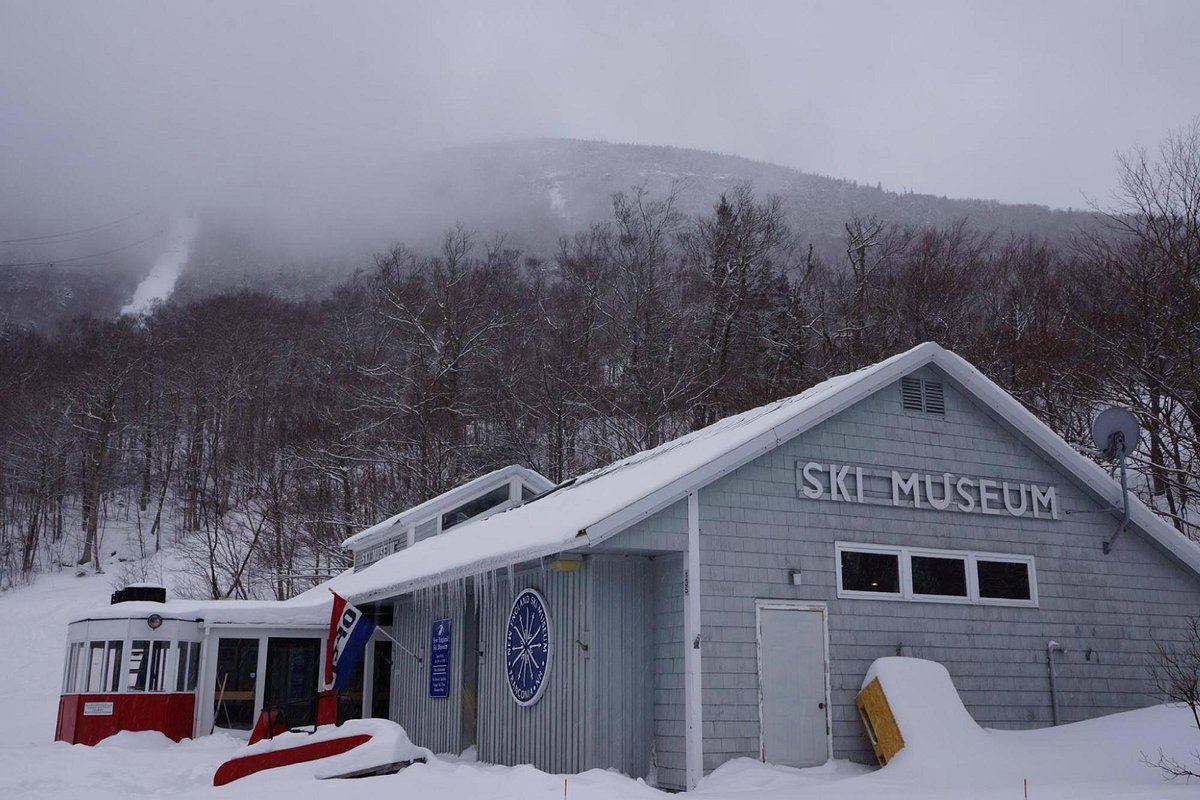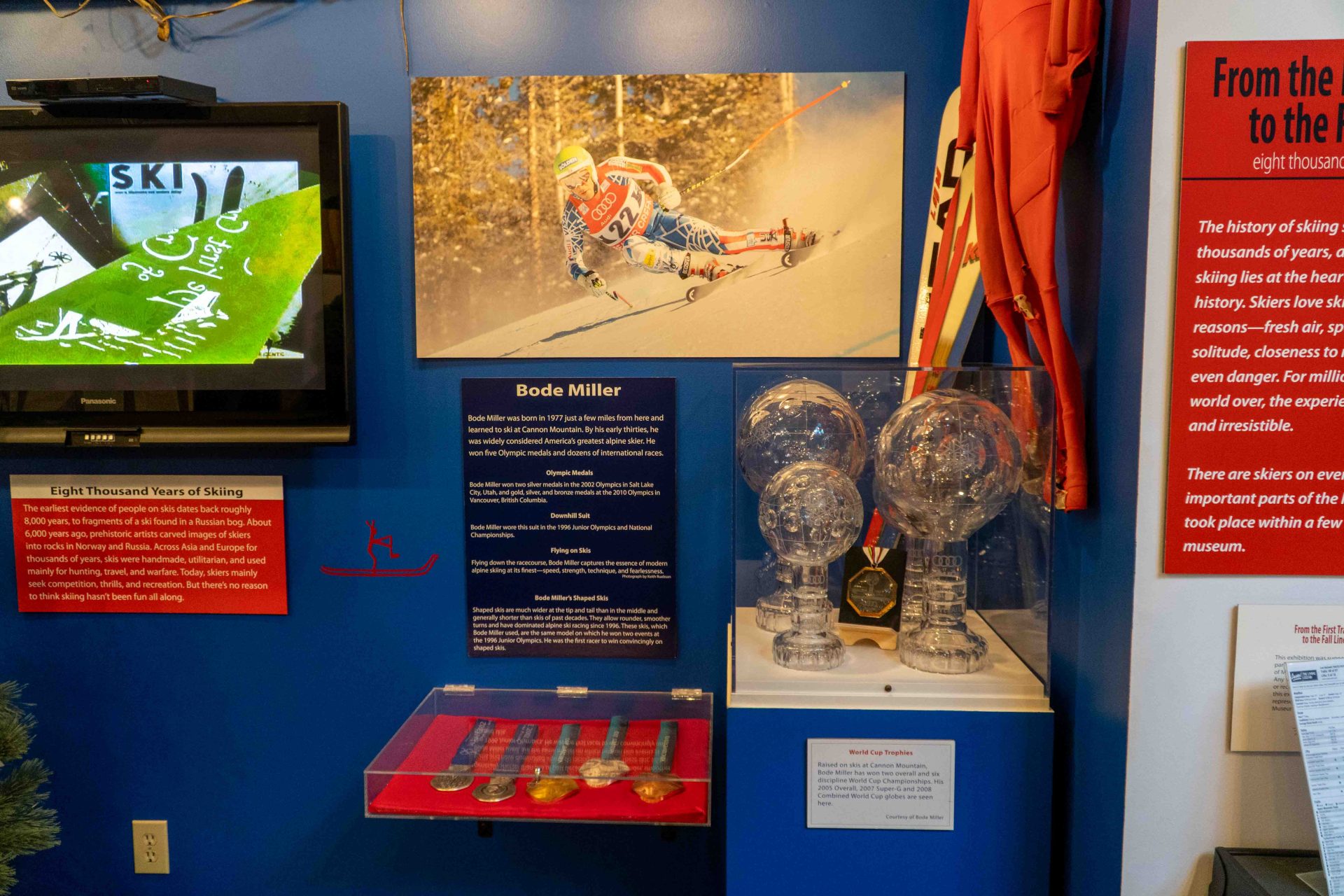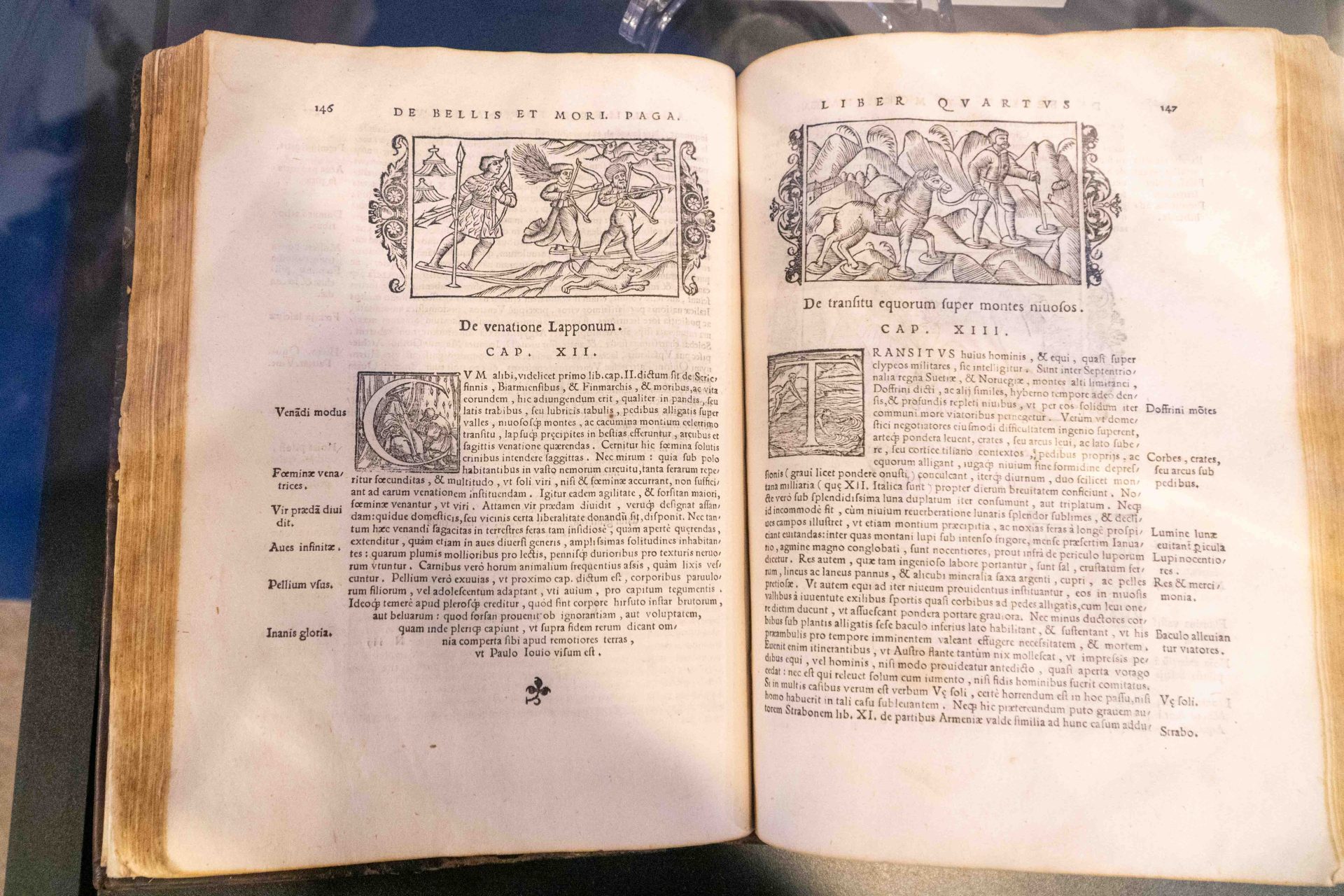
Anyone who has grown up skiing in New England knows that this area of America has some of the richest and most diverse history that the sport has to offer in the United States. From local mom-and-pop ski areas to the iconic mountains that dominate the Northeast ski landscape today, there is so much to learn and appreciate about skiing in New England. As someone who is not a New England local, I too find an interest in the rich and complex history of the area as a skier who frequents the region on trips, so when I was driving down the I-93 last summer and saw a sign for The New England Ski Museum, I told my girlfriend to write it down so I could search up what it was later.
After a quick scroll through their website, I found out that this neat little museum is home to a variety of historical ski artifacts and that it was definitely worth checking out. Come February, when I was back in New Hampshire on a ski trip and in the area, I knew it was a stop I had to add.
Although it may not be a sprawling museum, the quaint building sits at the base of the Cannon Mountain Aerial Tramway (the oldest tram in North America) and offers a variety of ski history knowledge and artifacts on display that will wow anyone. As soon as you enter the exhibit, you are greeted with some of its most prized possessions, including hometown hero Bode Miller’s Olympic Medals from both his wins during the 2002 Winter Olympics in Salt Lake City and his 2010 Winter Olympic Gold in Vancouver.

The small ski exhibit manages to pack the entire history of skiing into it. While they have different special exhibits that are constantly rotating, the general story the museum takes you on starts by talking about the origins of skiing, which dates back as far as 8000 B.C. (yes, that’s right, the sport is 10,000 years old). From there, the museum features the first ever known printed depiction of skiing, a Roman manuscript from 1555 AD published by a Swedish bishop of the Catholic Church. For me, this was my personal favorite object on display, as I found it so fascinating to look at how this now very high-tech and modern sport was depicted almost 500 years ago.

The exhibit then moves on to more modern times, focusing on the development of ski areas throughout New England. From the initial popularity of ski jumping in the early 1900s to the development of modern lift systems, which dramatically expanded the popularity of downhill skiing, you learn that the Northeast United States was the home of several significant innovations in sport, including:
- the first rope tow in the US in Woodstock, VT
- the first-ever snowmaking systems, which were experimented with at Black Mountain and Cannon Mountain in New Hampshire
- the National Ski Patrol, founded in Stowe, VT, as a volunteer program to look out for people’s safety on the slopes

The museum also features a variety of other important and interesting topics pertaining to the development of skiing in the United States. Some of these topics currently on display feature the importance of the US Army’s 10th Mountain Division in the development of ski areas throughout the United States, the evolution of ski equipment through the decades from wood skis and leather boots to the modern equipment of the 21st century, and some of the history of marketing skiing to get people to travel and visit the outdoors.
The best part about the New England Ski Museum – it is completely free to visit and is open year-round! As a matter of fact, this ski attraction is known to be busier in the summer, when many skiers actually have the time during the day to stop by and visit as compared to the winter when they are on the slopes.
Even though I only spent 45 minutes at the New England Ski Museum, I learned so much, and this rather small exhibit packs a punch. You leave having a much more profound appreciation for the sport, from its origins to the contributions countless people have made to improve it over the last hundred years.